Where Design Meets Play
A researched-based approach to adventure playscape design at Cincinnati's wildly successful Smale Riverfront Park
 Sasaki
Sasaki
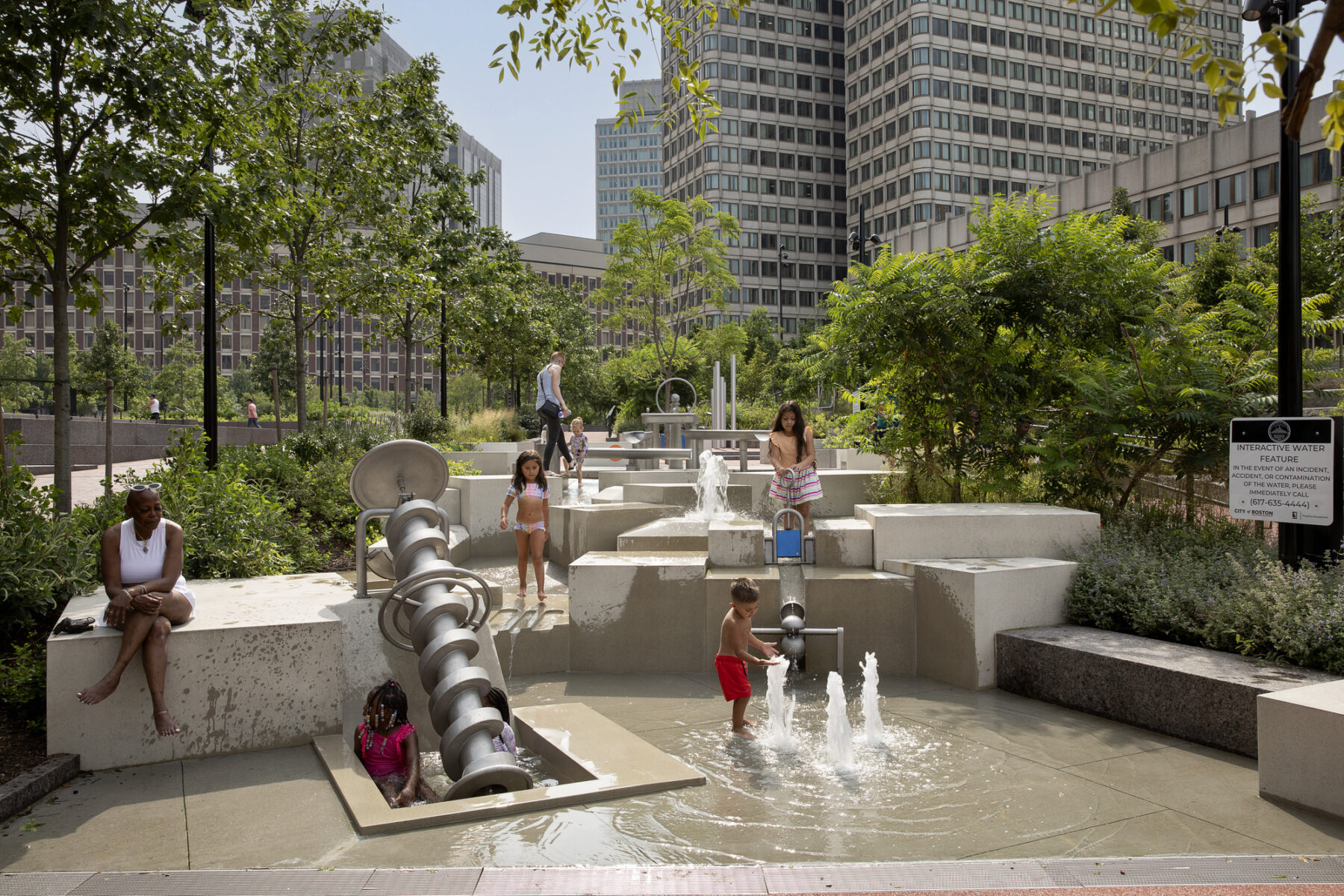
Playgrounds that challenge children and involve a calculated degree of risk can contribute to greater confidence, creativity in play, and enjoyment of physical activity. Sasaki’s design philosophy about adventure play is on display at projects across the United States.
Cast your memory back to childhood: Scrambling up rocks, stalking tadpoles, climbing a low-slung tree, and returning home with dust in your hair and rocks in your shoes, happy. The best play spaces let us test ourselves and expand our comfort zone.
According to Fast Company, Americans want their children’s playgrounds to feel more thrilling. In the last decade, within the limits of U.S. safety standards, communities have pushed for play structures that let children experience an increased sense of risk. These experiences reinforce feelings of independence and accomplishment in children. This design philosophy borrows from the adventure playground, popularized in urban Europe after World War II, which encourages children to experiment and lead their own play in a more improvisatory setting. As far back as the Progressive era, champions of the playground movement argued that the city playground “would be the womb from which a new urban citizenry–moral, industrious, and socially responsible–would emerge” (Paul Boyer, Urban Masses and Moral Order in America).
Sasaki’s philosophy of play draws from this history. We integrate research into all parts of our design process, using developmental psychology as inspiration for innovative and adventurous elements, and we follow up on implemented playscape projects with post-occupancy evaluations. We believe that playscapes should provide a challenge and give children something to conquer. They should engage a child’s imagination and motor skills, prompt them to interact with one another, encourage improvisation and creativity, and give them a physical outlet for energy. In addition to recreation, play spaces should be a hands-on lab for children to learn and explore the natural world.
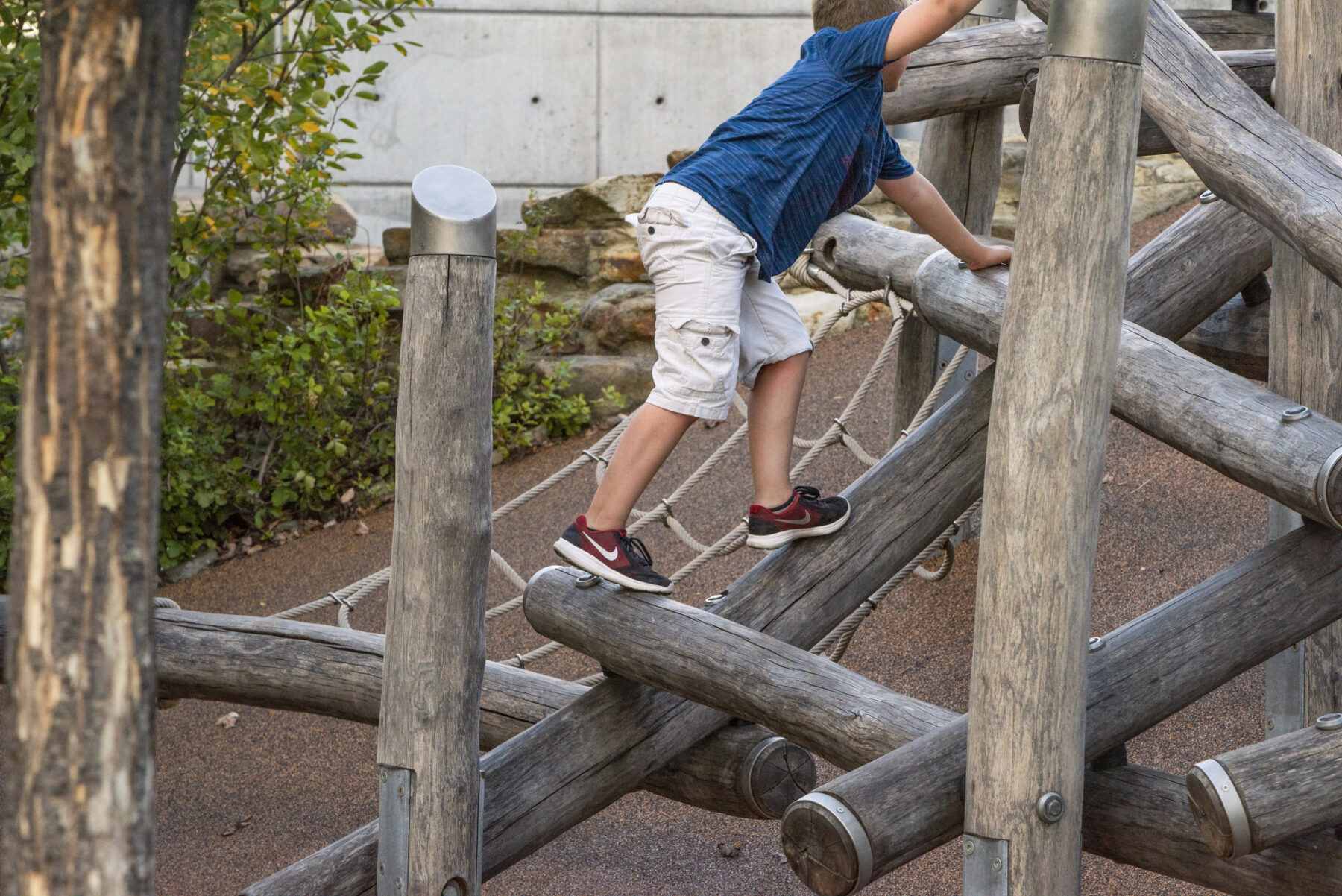
Adventure play at Smale Waterfront Park
As pediatric studies have shown, risk aversion and fear of litigation has made the average playground in the U.S. unimaginative, which in turn diminishes children’s creativity in play, confidence, and enjoyment of physical activity. Sasaki’s design philosophy about adventure play is on display at projects across the United States.
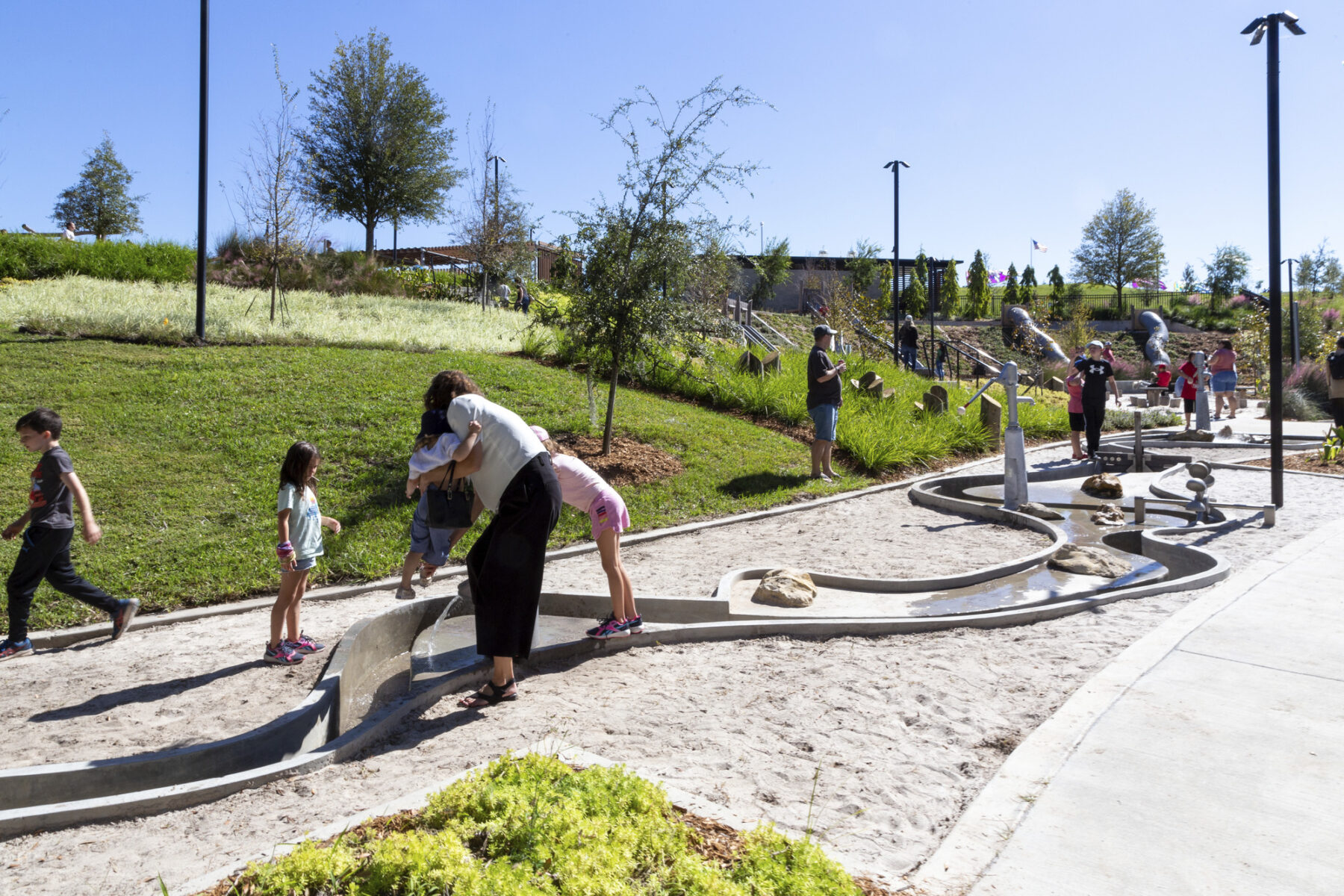
Principal Anna Cawrse plays with her children on the playground she designed at Bonnet Springs Park
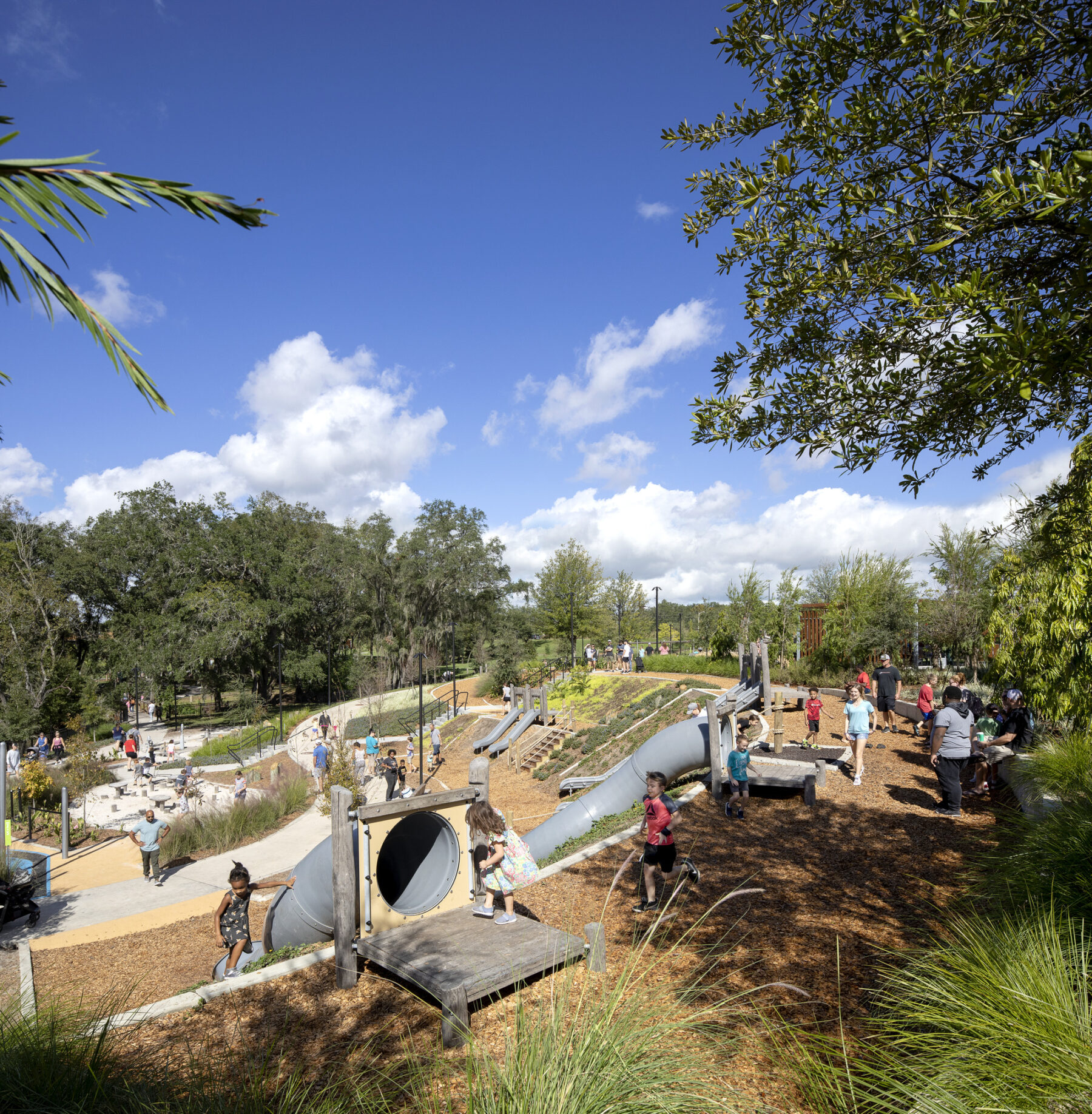
The Nature Playground at Bonnet Spring Park cascades down three levels
"Designing play in parks has always been so much more to me than the structure of a playground. It’s about creating an experience that connects children to the natural environment. A play space should balance elements of risk and moments of quiet contemplation."
Anna Cawrse, principal landscape architect
At Bonnet Springs Park in Lakeland, Florida, the Nature Playground cascades down a hill over three levels. Integrating native vegetation with timber, organic mound forms, periodic misting, and an interactive water-play feature, the playground references the 168-acre park’s topography. Exploration is also encouraged away from the playgrounds–visitors have opportunities to walk barefoot in a sand seep spring that filters the groundwater, scramble up the limbs of a Live Oak tree, and roll down a steep hill. “Designing play in parks has always been so much more to me than the structure of a playground. It’s about creating an experience that connects children to the natural environment. A play space should balance elements of risk and moments of quiet contemplation,” says Anna Cawrse, principal landscape architect. “For Sasaki, play is about creating the next generation of park stewards that will have that collective memory of the place they visited as a kid and will come back to for years to come.”
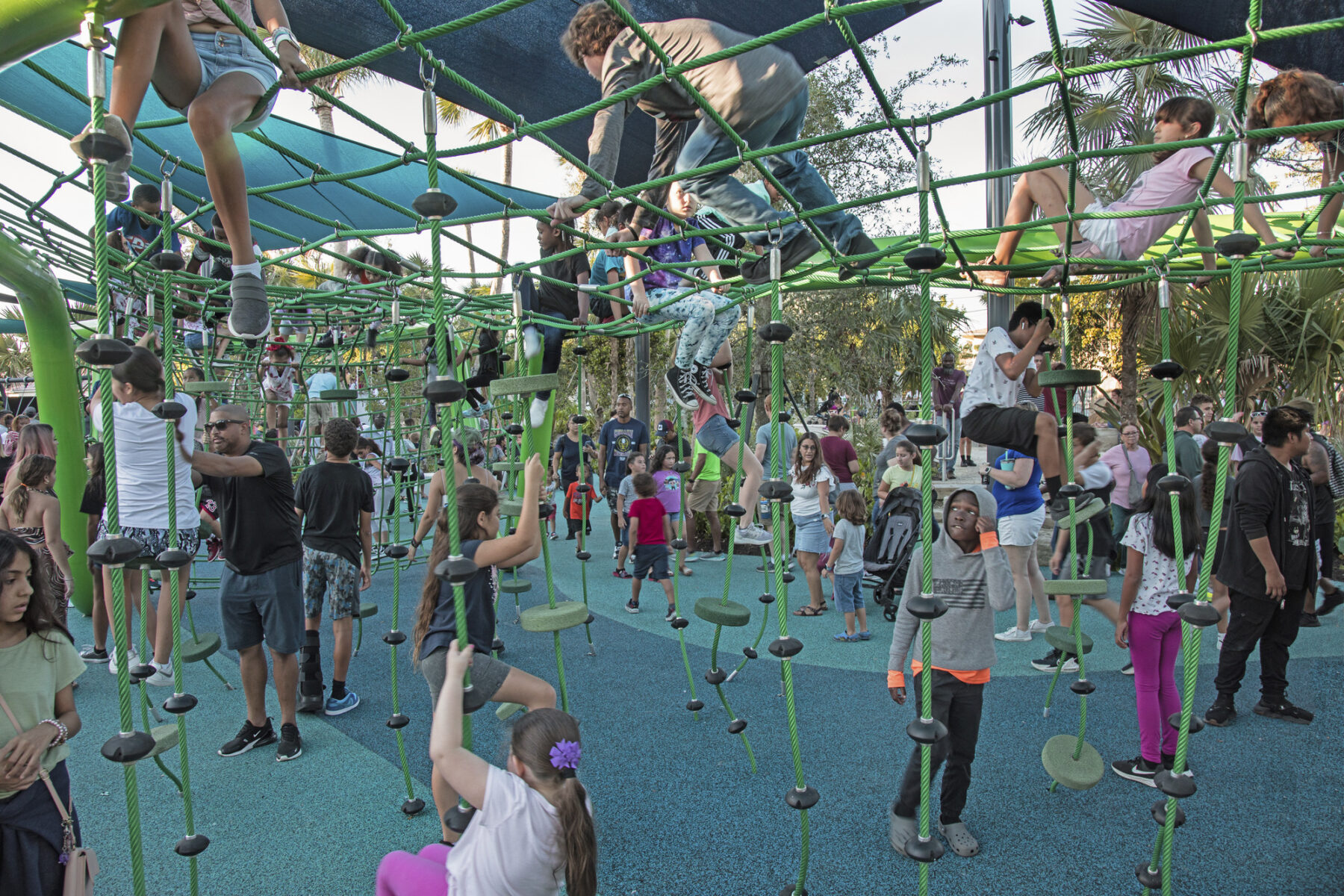
Children swarm Losner Park on opening weekend
Losner Park Playground in Homestead, Florida is an adventure-style play area embedded in native vegetation. Organized by zones for different age groups, it features climbing structures, slides, swings, and sculptural pieces. The verdant playground evokes the region’s tropical landscape, complete with a vine-like jungle gym that invites children to climb on the rope structure and discover new vantage points of the park.
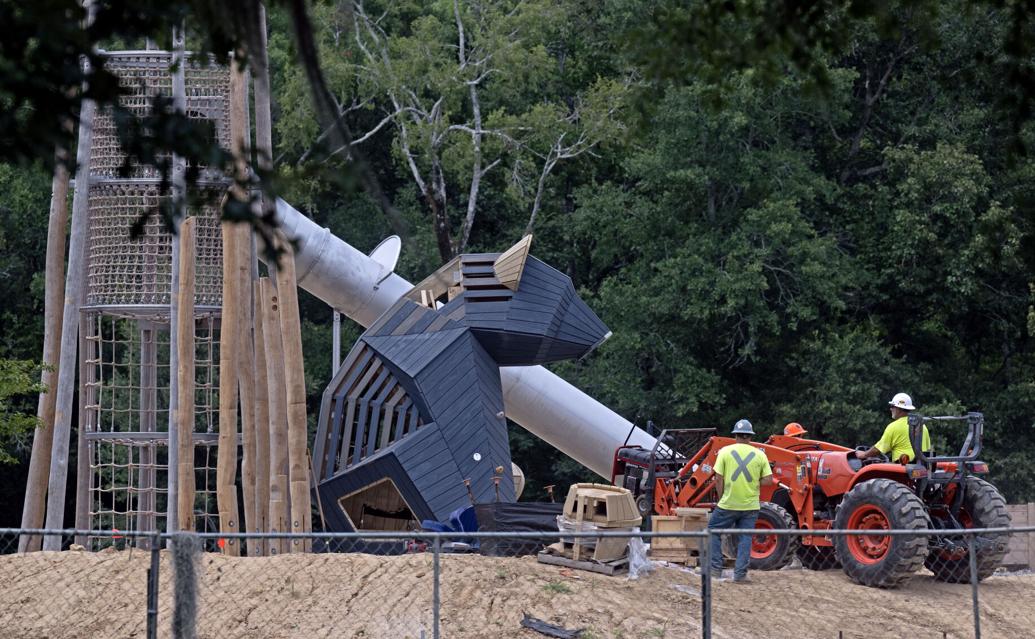
Installation of the mama bear sculpture at Greenwood Park
Greenwood Park, a 660-acre park in Baton Rouge currently under construction, includes an adventure playground inspired by the river’s form, which weaves visitors through the landscape and over topography. The playground is a fully inclusive environment that allows people of all abilities to interact while also offering age-specific zones. “At Greenwood, we designed spaces that challenge a child’s ability and create moments that let them feel risk and excitement, such as the three story rope tower or the 20-foot tall mama bear sculpture,” says Josh Brooks, principal landscape architect.
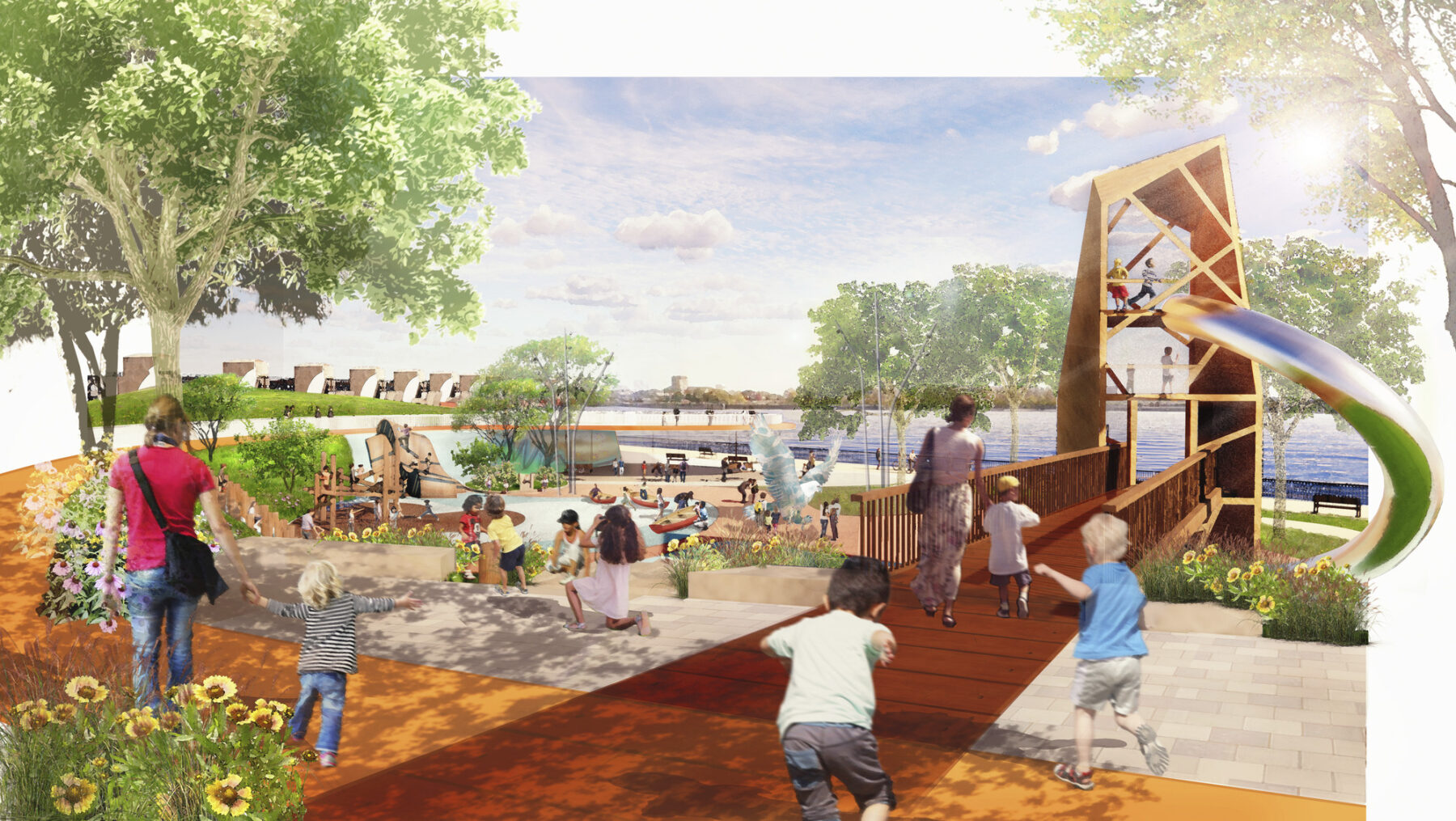
Play tower at Main Street Landing Riverfront
Jordan Pulling, landscape architect, describes the playground at the Main Street Landing Riverfront in Davenport, Iowa: “The play features of the park range from ground level activities to elevated swings and rope bridges, including epic play towers that allow users to push the limits of their comfort zone and find a thrill, no matter their ability.”
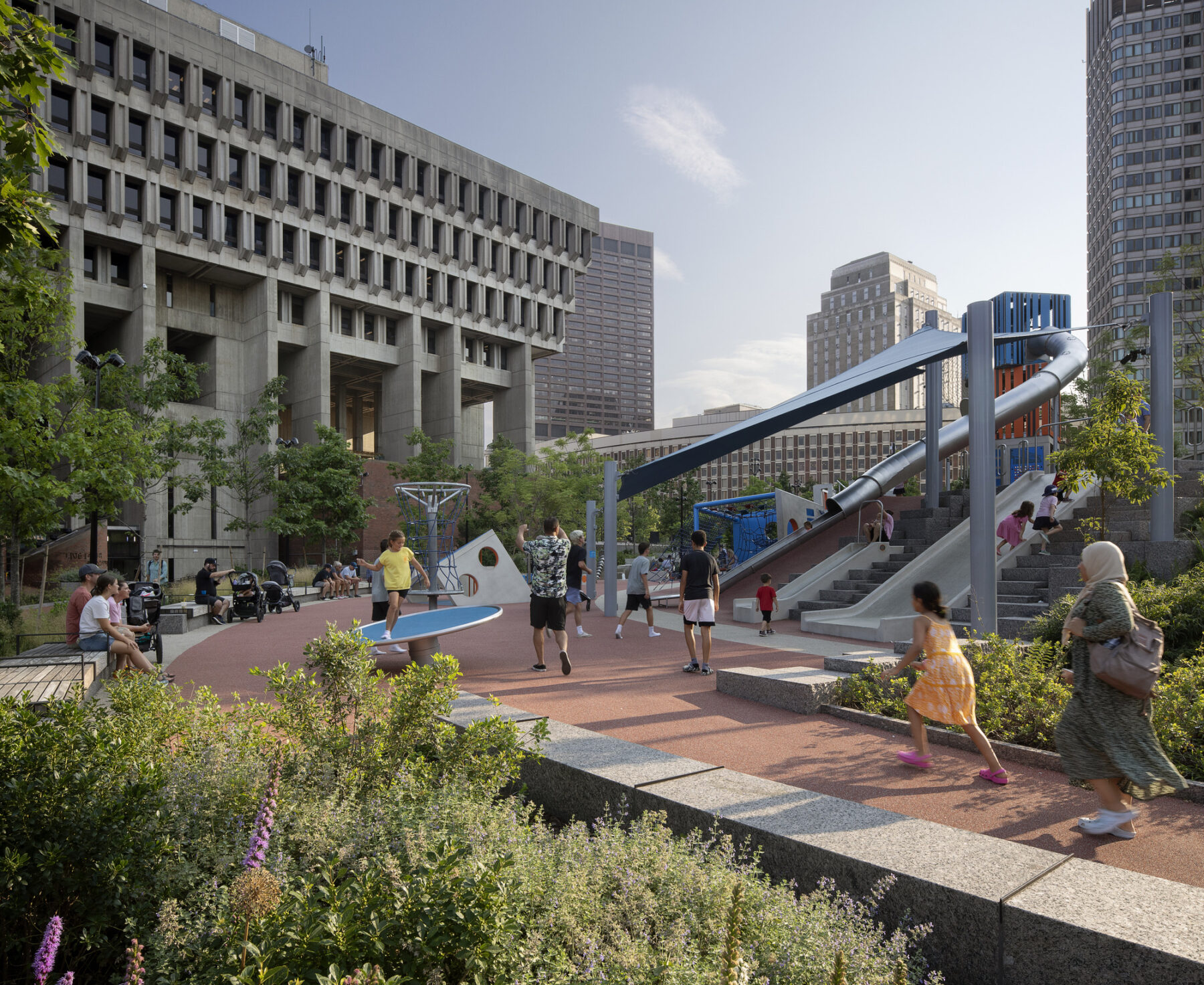
Playscape at Boston City Hall Plaza
City spaces are rarely designed with children’s needs prioritized, but their early encounters with civic space can set the tone for a life-long relationship between young citizens and their city. With City Hall Plaza’s renovation, the City of Boston created an inclusive playscape to draw people to play just steps from the seat of city government. The new plaza offers 12,000 square feet of destination adventure playscape for children of all ages and abilities. Designed for a neurologically diverse set of visitors, the terraced playscape features elements of active, sensory, and water play for children and their families. Features include a tall tube slide, play cubes that recall the design of City Hall, rock scrambles, and a play tower.
Mo Gomez, landscape architect, says, “the playscape stands as a testament to the power of play in fostering holistic development. With its diverse and engaging elements, it stimulates physical fitness, cognitive growth, and social skills, becoming a place of joy, creativity, and inclusivity for children to thrive and flourish.”
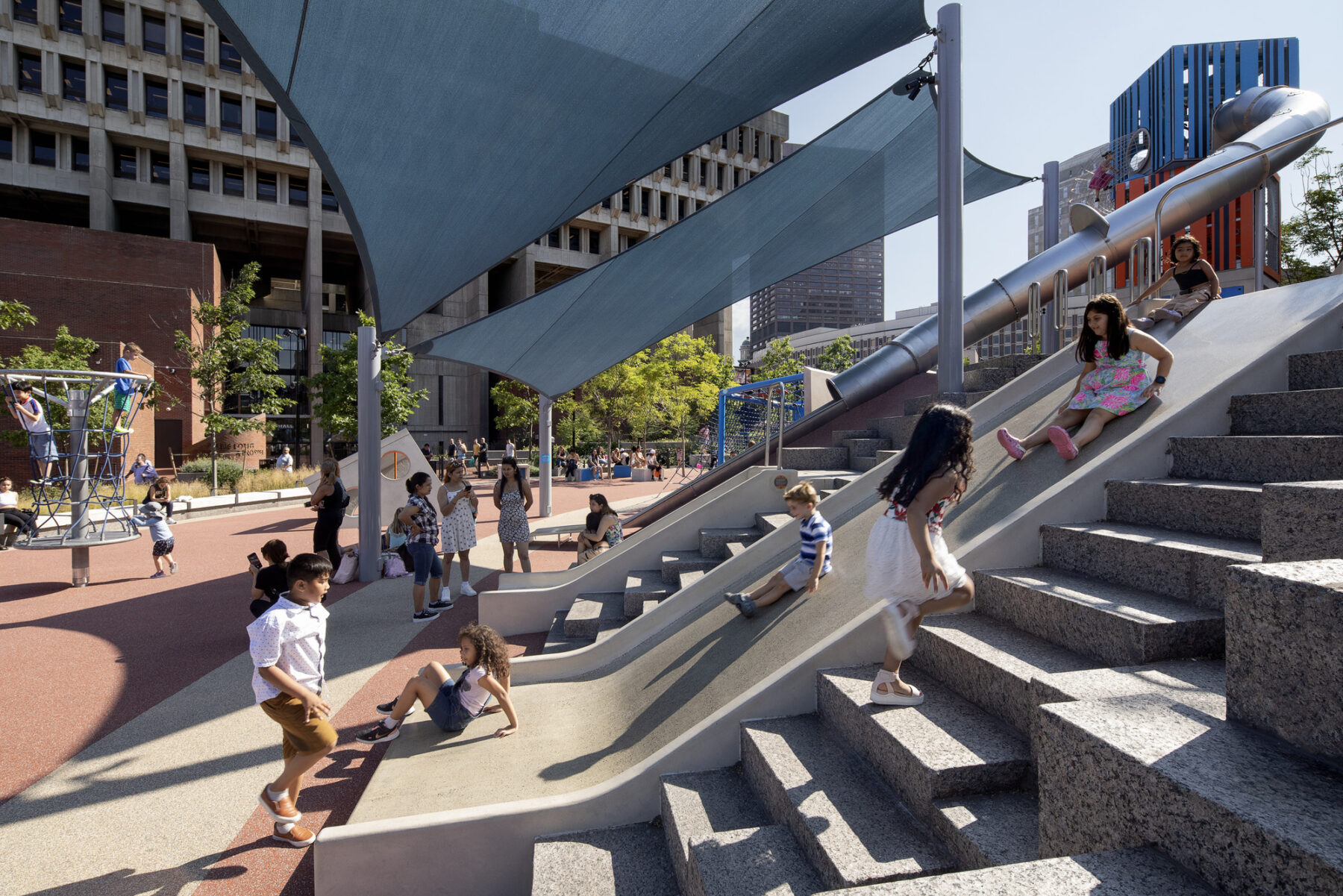
The benefits of adventure play include social wellbeing, creative imagination, increased confidence, and greater physical coordination. Playgrounds are safe and welcoming spaces, however they should not be expected to remove every element of uncertainty. A sterile environment is less engaging to children and adults alike. As our children return to school this fall with pristine new school supplies and bright white socks, remember that being at least a little bit wild is something to celebrate.
Boyer, Paul. “Housing, Parks, and Playgrounds: Positive Environmentalism in Action.” Urban Masses and Moral Order in America, 1820-1920, Harvard University Press, 1978, pp. 242. JSTOR, https://doi.org/10.2307/j.ctv1pncnwk.26. Accessed 26 Sept. 2023.